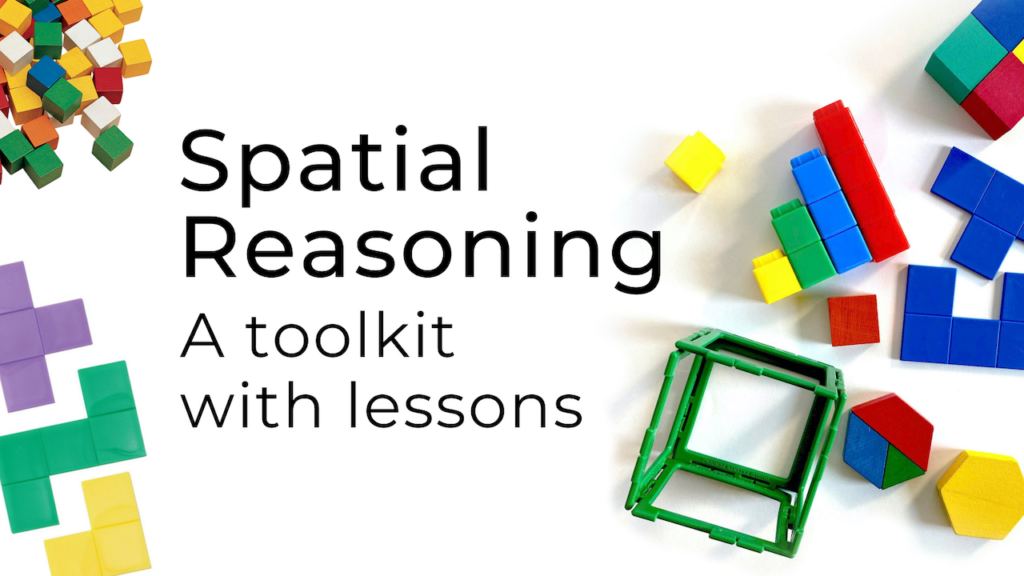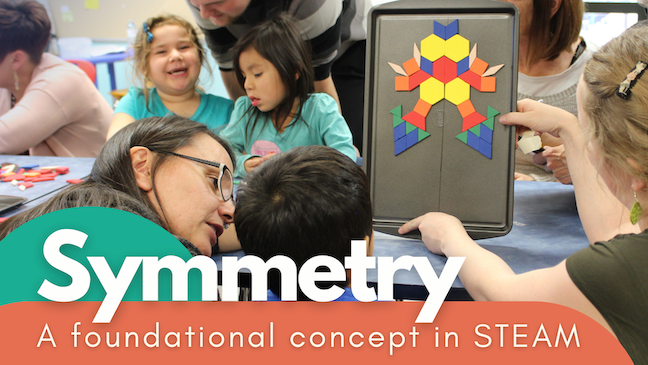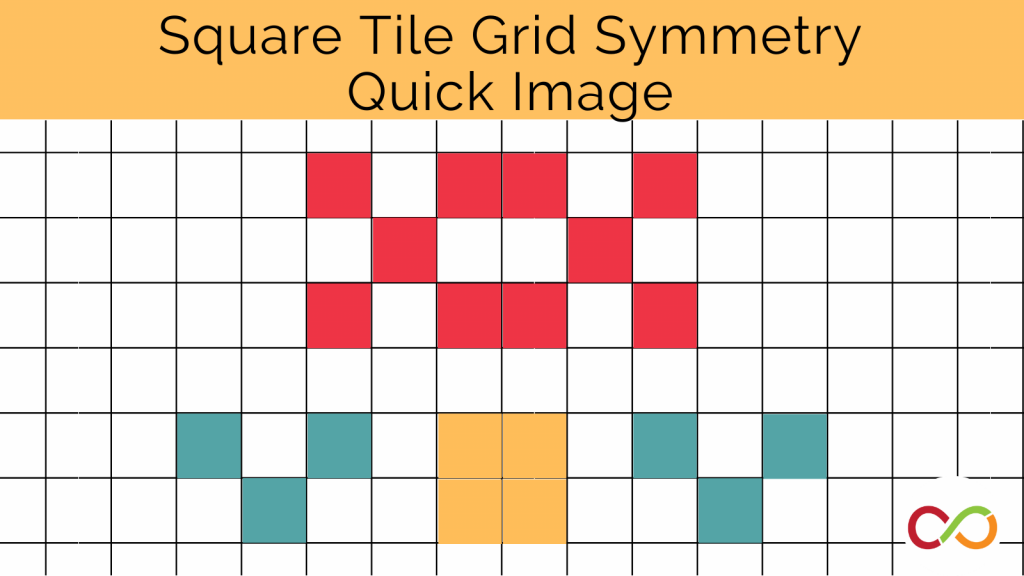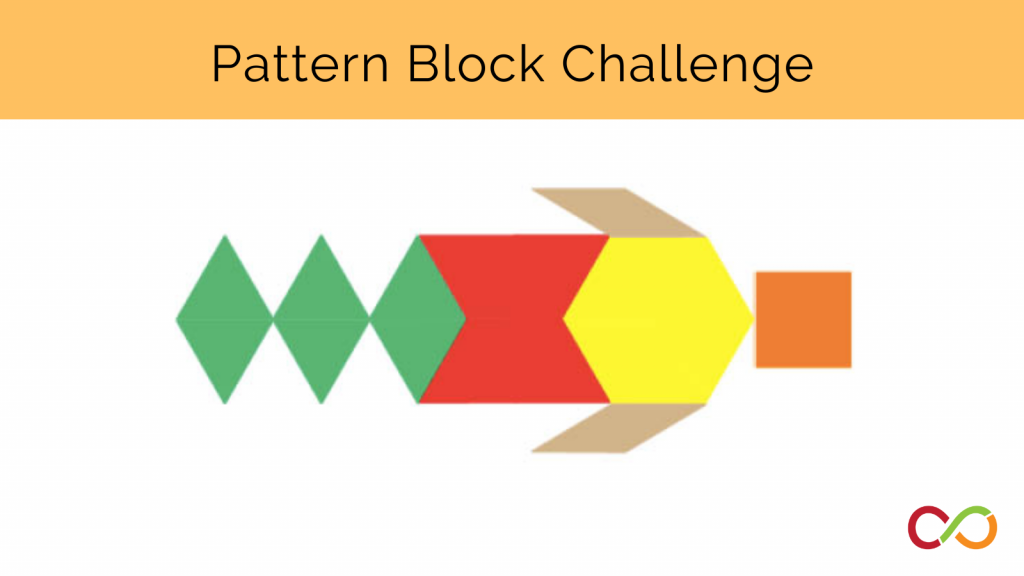Hole-Punch Symmetry
Primary (Age 6 – 9)
Curriculum Goal
Primary: Geometry and Spatial Sense
- Describe the relative positions of several objects and the movements needed to get from one object to another.
Context
- Students are sitting at desks or on a carpet facing the interactive whiteboard/projector.
Materials
- Interactive whiteboard or projector
- Hole-Punch Symmetry slides (Appendix A)
- Hole punch and square papers used for checking predictions
Lesson
- Hold a square piece of paper and clearly show students that you are folding it in diagonally with the fold at the right.
- With the paper held in front of you, punch a hole in the top right-side corner (right angle).
- Show students the example of the Hole-Punch Symmetry slides (Appendix A). Explain that the bold line indicates the fold. Challenge students to visualize what the piece of paper looks like when unfolded.
- Present four possible options of what the square would like unfolded and invite students to select the best option.
- Unfold the piece of paper to confirm students’ prediction.
- Ask students to explain how they knew where the holes would be on the paper. Encourage the use of spatial language.
- Continue to the next challenges in Appendix A, which increase in complexity, both in terms of where the folds are on the paper (vertical, horizontal, or diagonal), and with an increasing numbers of folds and/or holes.
Look Fors
- How does the child describe the location of the holes? Does the child use spatial language (over, under, top, bottom, right, left)?
- Is the child able to consistently and accurately identify where the holes will be when the paper is unfolded?
Extension
- Reverse the challenge by showing students the open hole-punched square paper. Ask: If I could only make one hole-punch, how many times would this paper need to be folded to result in this design?
- Students can create their own hole-punch symmetry challenges and challenge other classmates to solve it.
Share this lesson
Share on facebook
Share on twitter
Share on email




